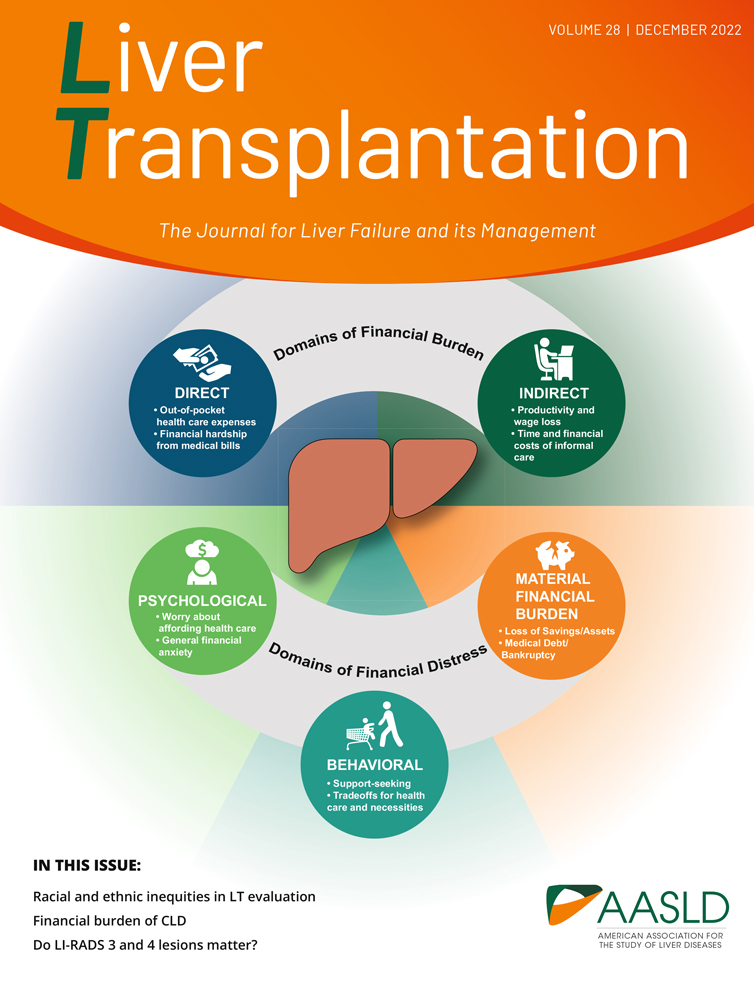Reply: Transient portocaval shunt for a small-for-size graft in living donor liver transplantation
In general, for a liver transplantation to be successful, the graft size should cover 30%-40% of the expected liver volume or 0.8%-1.0% of the body weight of the recipient.1, 2 However, small-for-size-graft syndrome depends not only on the graft size but also on the recipient's preoperative condition; if it is poor, a graft size of greater than 40% of the expected liver volume is desirable.3, 4 Moreover, we have previously reported that excessive portal inflow is related to poor patient prognosis.5 When the portal vein flow (PVF) via the graft is greater than 250-300 mL/100 g after reperfusion, certain measures for attenuating excessive portal inflow should be attempted. Undoubtedly, splenectomy is effective for small-for-size-graft syndrome. However, it increases the risk associated with pneumonia and portal vein thrombosis.6, 7 On the other hand, we can estimate PVF or the portal vein pressure by clamping the portacaval (PC) shunt in the patients with a temporary PC shunt. With respect to the aforementioned points, we believe that a temporary PC shunt is a useful approach for minimizing excessive portal inflow.
In this patient, the PC shunt was reconstructed by end-to-side anastomosis between the right portal branch and the inferior vena cava at the anhepatic phase in order to control the portal vein pressure during the operation. After the reperfusion, PVF, which was measured with an ultrasonic transit flow meter, was 1180 mL/minute (373 mL/100 g via the graft) when the PC shunt was closed. When the shunt was kept open, PVF was 580 mL/minute (183 mL/minute/100 g via the graft). On the basis of our previous experience,6 the PC shunt was kept open, and a couple of weeks following transplantation, it was occluded after it was confirmed that the recipient's clinical condition was stable.
REFERENCES
Masahiko Taniguchi*, Tsuyoshi Shimamura , Hiroyuki Furukawa , Satoru Todo*, * Department of General Surgery, Graduate School of Medicine, Hokkaido University, Sapporo, Japan, Division of Organ Transplantation, Graduate School of Medicine, Hokkaido University, Sapporo, Japan, Department of Organ, Transplantation and Regeneration, Graduate School of Medicine, Hokkaido University, Sapporo, Japan.




